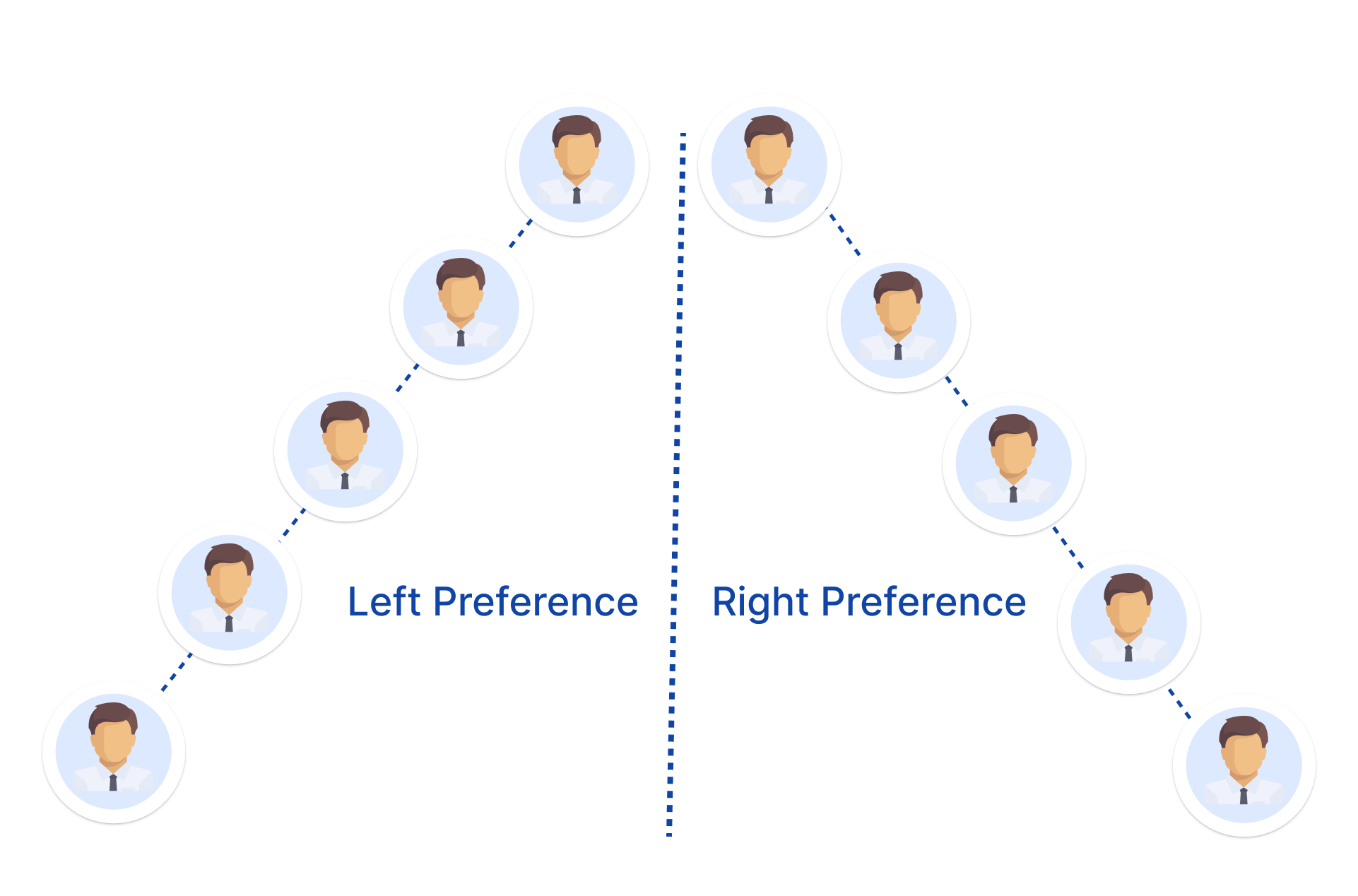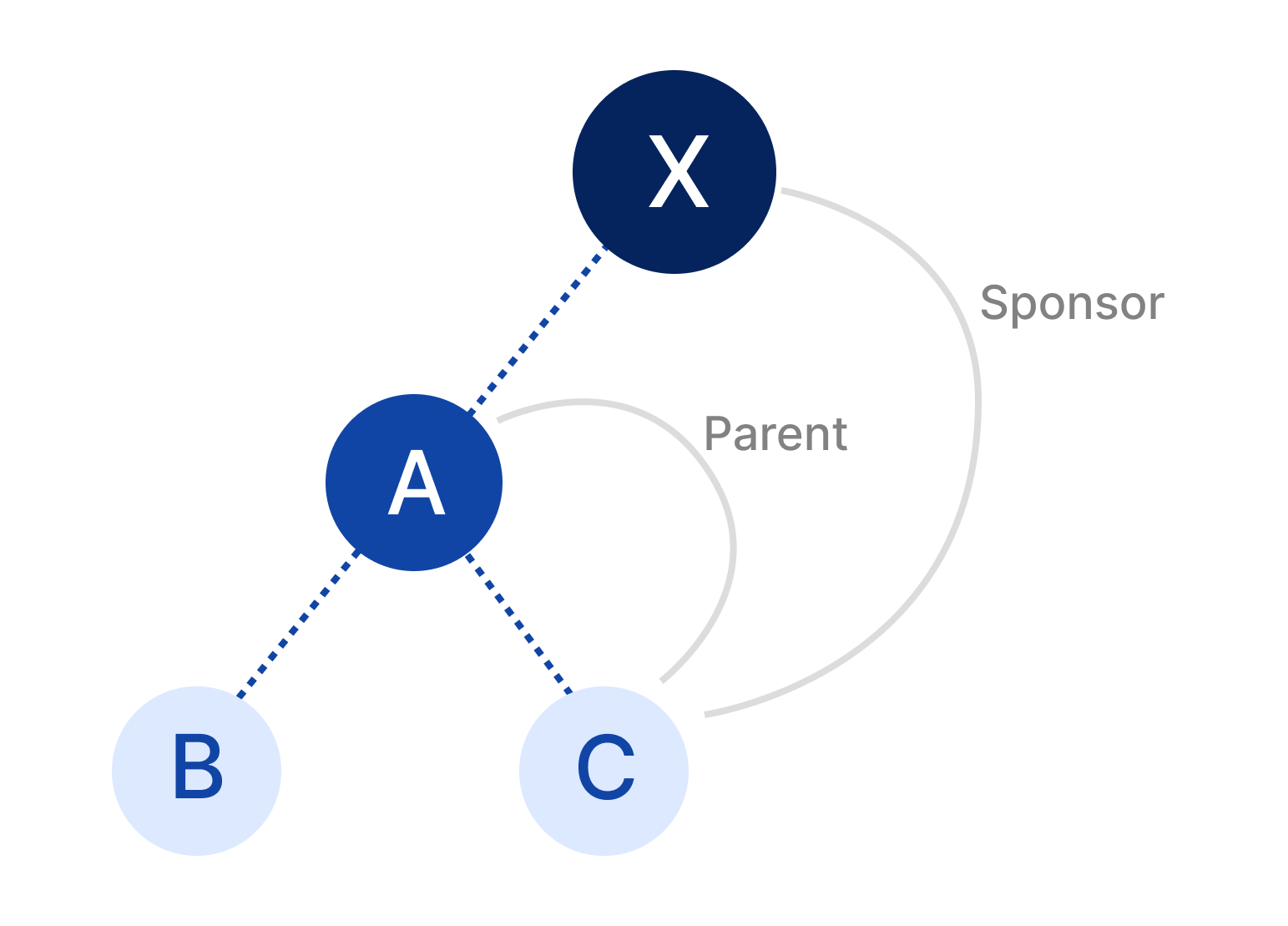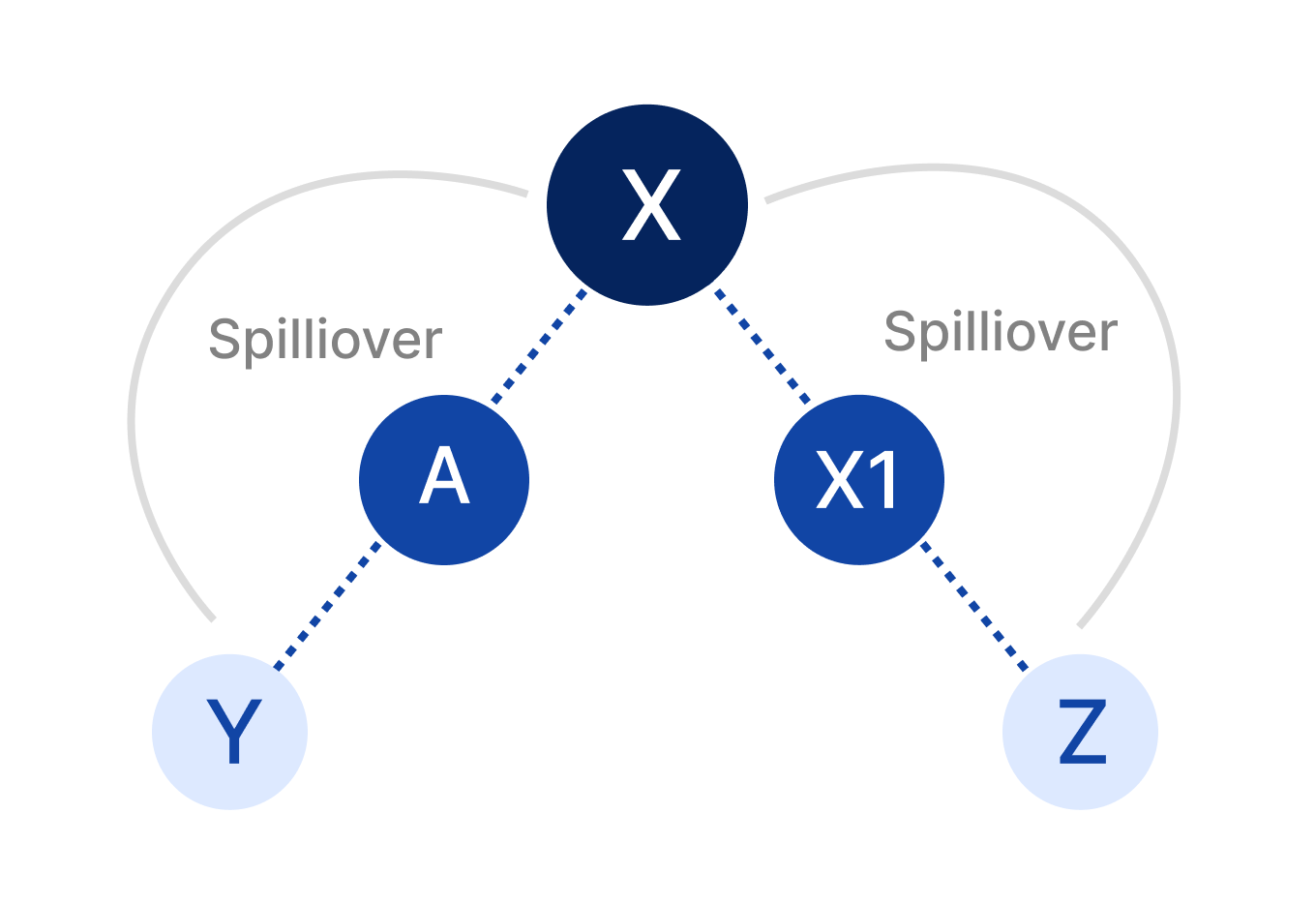Binary MLM Plan: A Powerful Tool for Network Marketing Growth 1
The Binary MLM Plan is a compensation model that revolves around the power of twos. It organizes distributors into two legs, typically known as the left and right legs. Each distributor is required to recruit and place new members in these legs, forming a binary tree structure. Through its sophisticated algorithms, the WP MLM plugin provides a detailed breakdown of commissions earned by each distributor at every level of the business.
Double your earnings with our Binary MLM Plan. Join now and start earning!
WP MLM Software: Fortifying Binary MLM Plan

WP MLM plugin is a WordPress plugin designed to simplify and enhance the Binary MLM Plan experience. This WordPress plugin streamlines commission calculations. Its user-friendly interface allows distributors to navigate effortlessly through the complexities of the Binary MLM Plan, focusing on precision, efficiency, and maximizing their success.
Our binary MLM software plugin is the cornerstone of strategic network marketing. This plugin seamlessly integrates with WordPress, offering a user-friendly experience while wielding powerful functionalities to manage and optimize binary MLM compensation plans.
This binary MLM plugin takes the helm in managing the compensation intricacies, ensuring that every distributor is fairly rewarded for their efforts. The plugin’s capabilities extend to real-time commission tracking, accurate calculation of binary commissions, and comprehensive reporting.
How does the Binary MLM Compensation Plan Work?
The Binary MLM Compensation Plan operates on a binary tree structure, where each distributor recruits and places new members into two legs: the left and right legs. After recruiting 2 downlines, distributors may place new recruits in the downline of their recruits.
This adding of downlines beyond the initial two, contributing to reaching the next level, is called the spillover process.
Commissions are calculated based on the sales volume of the weaker leg. The plan encourages balance, ensuring that both legs contribute to overall growth. The commission percentage is determined by the volume of the lesser-performing leg, emphasizing the importance of nurturing and developing the entire network.
Here, the distributors are motivated not only to build their stronger leg but also to support the growth of their weaker leg. This balance ensures sustainable growth and fair commission distribution throughout the network.
Pros and Cons of Binary MLM Plan
| Pros of Binary MLM Plan | Cons of Binary MLM Plan |
|---|---|
| Unlimited Depth | Limited income for weaker Legs |
| Team Work | Team Imbalance |
| Quick Growth | Limited Width |
| Carry Forward | |
| Spillover |
Achieve boundless success with our Binary MLM Plan – where balanced growth meets lucrative commissions.
Contact UsDiverse Scenarios of Binary Compensation Plan
Prior to delving into various scenarios within the MLM binary plan, it’s essential to familiarize yourself with certain terms. The sponsor is the distributor who introduces a new member to the network.The parent, on the other hand, refers to the distributor who serves as the direct upline of the new member within the binary MLM plan.
Spillover Guidance
The spillover in MLM can vary based on the company’s preferences, but there is a typical framework when adding new recruits into the genealogy tree. By default, new recruits are initially placed on the extreme left, and the subsequent spillover members are positioned on the extreme right. This pattern continues, with additional spillover members filling positions alternately on the extreme left and right of the genealogy tree. Depending on the sponsor’s preference or the owner’s need, new members may also be assigned to any available position within the MLM binary plan.

Below are several scenarios that may occur when sponsors position new recruits at various locations within the genealogy tree of a binary MLM plan .
1. The Sponsor & the Parent of downlines are the same

When distributor X sponsors A and A, in turn, introduces a new member B to the left leg of Awithin the binary tree, B becomes the direct downline of A. Subsequently, if A sponsors another new member,C, it is placed to the right of A, occupying the available position.
As a result, B and C become the direct downlines of A. In this scenario, A serves as both the sponsor and the parent to B and C.
2. The Sponsor and the Parent of the downline are different

Here, X sponsors A and Y, with Y positioned under the right leg of A. Upon A sponsoring a new member, B is placed under the left leg of A due to the absence of a vacant position on the left.
For Y, A is the parent, while X remains the sponsor. Notably, the binary structure of A is created through a combination of their individual efforts and the contribution of their upline (X) by spilling over the member Y.
3. Spillover without completely forming the binary

Distributor X initiates the sponsorship of two new members, A and X1, placing them on the right and left legs, respectively, in the binary structure, thus establishing the binary tree for X.
Subsequently, A sponsors a new member, B, to the right leg, as the left position is already filled by a new member, Y, sponsored by X. Concurrently, X sponsors Z and places it to the right of X1. Notably, Y and Z represent spillover placements beneath the downlines of X, A, and X1. Specifically, Y is positioned under the left downline of X, A, while Z is situated under the right downline of X and X1.
This results in two spillovers occurring on both sides of X, contributing to the development of the binary structure without reaching completion on either side.
4. Sponsoring only to the left leg of the binary structure

In this situation, A sponsors two new members, B and C. B is positioned directly under the left leg of A, and subsequently, C is placed under the direct left leg of B. Notably, C serves as a spillover, strategically positioned at the extreme left of the structure.
5. Normal spillover in binary structure

When both the left and right legs of a member are occupied, the subsequent new member sponsored will be positioned under the next level as spillover.
In the case where distributor X sponsors new members A and X1, achieving the completion of X’s binary structure, any further sponsorship by X, such as Y and Z, will result in their placement under the next level as normal spillovers.
Exploring Different Binary Spillover Preferences
The positioning of spillover within the Binary MLM Plan is at the discretion of the MLM company, with varying preferences across different companies. This implies that the approach to spillover may differ based on the unique policies and strategies adopted by each MLM company. The types of spillovers for binary MLM plan is as follows:
Weaker Leg Spilling
Here the newly introduced members are placed under the weak leg of the MLM binary plan structure depending upon the lowest sales volume acquired.
Balanced Ratio Spilling
The new members are evenly distributed between the two legs to maintain balance, ensuring fair commission and bonus distribution.
Multi-Position Spilling
Once the initial 3 positions are occupied, subsequent positions are promptly filled through spillover mechanisms, depending on their joining package.
Popular Binary MLM Companies
Binary MLM companies have gained prominence for their unique compensation plans and innovative approaches to business growth. Here are some of the top Binary MLM companies that have embraced the binary compensation plan, leveraging it to propel their network marketing businesses to new heights.
| Binary MLM Companies | Country | Revenue (2022) |
|---|---|---|
| Herbalife | USA | 5,200 |
| Optavia – Medifast | USA | 1,600 |
| Ambit Energy | USA | 1,250 |
| USANA | USA | 999 |
| Market America | USA | 800 |
| Crowd1 | UAE | 625 |
Binary Commissions and Bonuses

Matching Bonus
The bonus received when directly sponsored individuals generate commissions. Additionally, the distributor earns a percentage of the commissions earned by members within their sponsored team.

Custom Bonus
This bonus is customizable to align with the unique requirements of the MLM company or distributor. This recognizes and rewards outstanding performance among team members or to provide incentives for specific behaviors.

Return Of Investment
Reward distributors who make a targeted financial commitment to their business. For instance, this bonus is granted when a distributor invests a defined amount in marketing supplies or product inventory.

Binary Commission Bonus
Bonus achieved based on the sales volume generated in both legs of the binary tree. Numerous MLM binary plan software systems incorporate automatic commission calculations based on their specific plan formulas.

Leveling Bonus
Also known as Depth Bonus, this bonus recognizes distributors for achieving a specific depth level within their binary tree. For instance, a distributor may be eligible for this bonus upon successfully building a team with 10 levels of distributors.

Fast Start Bonus
Paid upon the initial purchase or sale made by a new distributor joining the MLM company. This bonus is crafted to motivate newcomers to swiftly embark on their journey and generate early momentum.

Rank Advancement Bonus
MLM companies establish distinct ranks for their distributors, and achieving a higher rank often brings forth bonuses and benefits. The Rank Advancement Bonus specifically acknowledges and rewards distributors who ascend to a new rank within the binary tree structure.
How is Binary MLM Commissions Calculated?
In the dynamic world of Binary MLM plans, understanding the intricacies of commission calculation is crucial for distributors. Here’s a step-by-step breakdown of the process:
Distributor X sponsors two new members, A and B, placing them strategically in the left and right legs, forming the initial structure. As the network grows, each distributor accumulates sales volume on both the left and right legs. This includes personal sales and the sales generated by the downline.
PV (Personal Volume) and GV (Group Volume) Calculation
Personal Volume (PV) reflects the distributor’s individual sales. Group Volume (GV) represents the cumulative sales volume from the distributor’s entire team.
Here, we are calculating the commissions earned by A, B, C and D in this binary MLM. All the calculations done here are based on 10% P.V.
First, let’s calculate binary MLM commissions received by A.
In this network, A recruits B and C (B = 100 PV and C = 100 PV ). Since the volume of sales on both legs are equal and they are matched,
1. Commission with respect to A
Commission earned by A = 10% of 100 = 10 USD.
In case the commission earned on both legs is not matched, then we will consider the leg with the lowest P.V, called the weaker leg, for calculations.
Now, B recruits D and E.
With respect to A, D, and E will fall on its left.
D manages a P.V of 100 while E manages 200 P.V.
So the total PV on the left = 100+200 = 300 P.V.
On the right, C recruits F and G, and F and G manage a P.V of 100 each.
So, the total PV on the right of A = 100+100 = 200.
Going by the matching on the basis of the weaker leg, the right leg is the weaker leg since it could raise only 200 PV in comparison with 300 PV on the left side.
Hence, 200 PV from the right leg of A is matched with 200 PV from the left leg, and the remaining 100 PV from the left will be carried forward on the left side of A.
Therefore, the commission earned by A from B and C = 10% of 200 = 20 USD.
Therefore, the total commission earned by A = 10 + 20 = 30 USD.
2. Commission with respect to B
B recruits D on the left and E on the right.
D earns 100 PV while E earns 200 P.V.
Since the left leg is the weaker leg, 100 PV from the left and right is matched. The remaining 100 PV from the right is carried forward to the right leg of B.
Commission earned by B = 10% of 100 = 10 USD.
Therefore, the total commission earned by B = 10 USD.
Commission with respect to C
C recruits F on the left leg and G on the right leg. Both F and G generate 100 PV each.
For C, since P.V on both legs are equal, 100 PV on the left leg is matched with 100 P.V on the right leg and there is no carry forward in this case.
Commission earned by C = 10% of 100 = 10 USD.
Therefore, the total commission earned by C = 10 USD.
Binary MLM Calculator
The Binary MLM Calculator’s significance lies in its ability to efficiently and accurately compute commissions for network marketers based on the binary compensation plan. This tool automates complex calculations associated with binary MLM, such as binary matching bonuses, residual income, and commission distribution. By providing a user-friendly interface and real-time results, the Binary MLM Calculator not only enhances the accuracy of commission payouts but also saves time and effort for MLM businesses.
- WP MLM Software: Fortifying Binary MLM Plan
- How does the Binary MLM Compensation Plan Work?
- Pros and Cons of Binary MLM Plan
- Diverse Scenarios of Binary Compensation Plan
- Exploring Different Binary Spillover Preferences
- Popular Binary MLM Companies
- Binary Commissions and Bonuses
- How is Binary MLM Commissions Calculated?
- Binary MLM Calculator